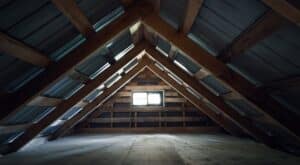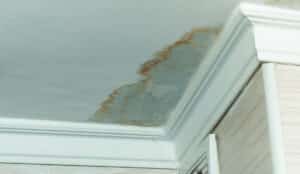How to improve attic ventilation
Trapped heat, leading to high energy bills and “cooking” the shingles off of your roof as well as ice dam buildup in winter and trapped moisture leading to mold growth – these are the result of an attic that cannot breathe, especially in the climate in West Michigan.
Most houses are sealed tight, or the owners seek to have them sealed tighter than they are. Stop the air blowing into the electrical outlets, put more insulation in the attic and walls, keep the water out. These are important steps in saving energy and protecting your investment. But the house also needs to breathe, and most of that important breathing happens in the attic. Unless the attic is well ventilated, this leads to high cooling bills, ice dam formation and deterioration of rafters, roof decking, etc. from moisture.
Understanding of good attic ventilation has changed radically in the last 40 years. In our experience roofing in the Grand Rapids area, the majority of houses do not breathe as well as they should. Ideally, fresh air enters at the eaves, sweeps up along the roofline to the ridge and is vented there, moving the heat and moisture out. Below are illustrations of that being done well and being done poorly.
As seen in the illustrations above, a healthy attic includes the following:
- Some way for intake air to enter at the eave.
- Baffles to keep the air passages open.
- Sufficient insulation along the ceiling line.
- A moisture barrier between the attic and the living space.
- Appropriate exhaust for ventilation fans in the living space (bathroom and kitchen).
- An exhaust system at or near the ridge line that actively pulls air out of the attic.
We see each of these items lacking or malfunctioning in some way in many of the homes we work on in the Grand Rapids area. We will cover each of these aspects more fully in later blogs. Call Above Roofing and Exteriors. We are Top of the house certified by Owens Corning if you wish for an evaluation. Make sure to like, share and subscribe to our blog for further information about these and other issues related to roofing, ventilation, insulation and more!




